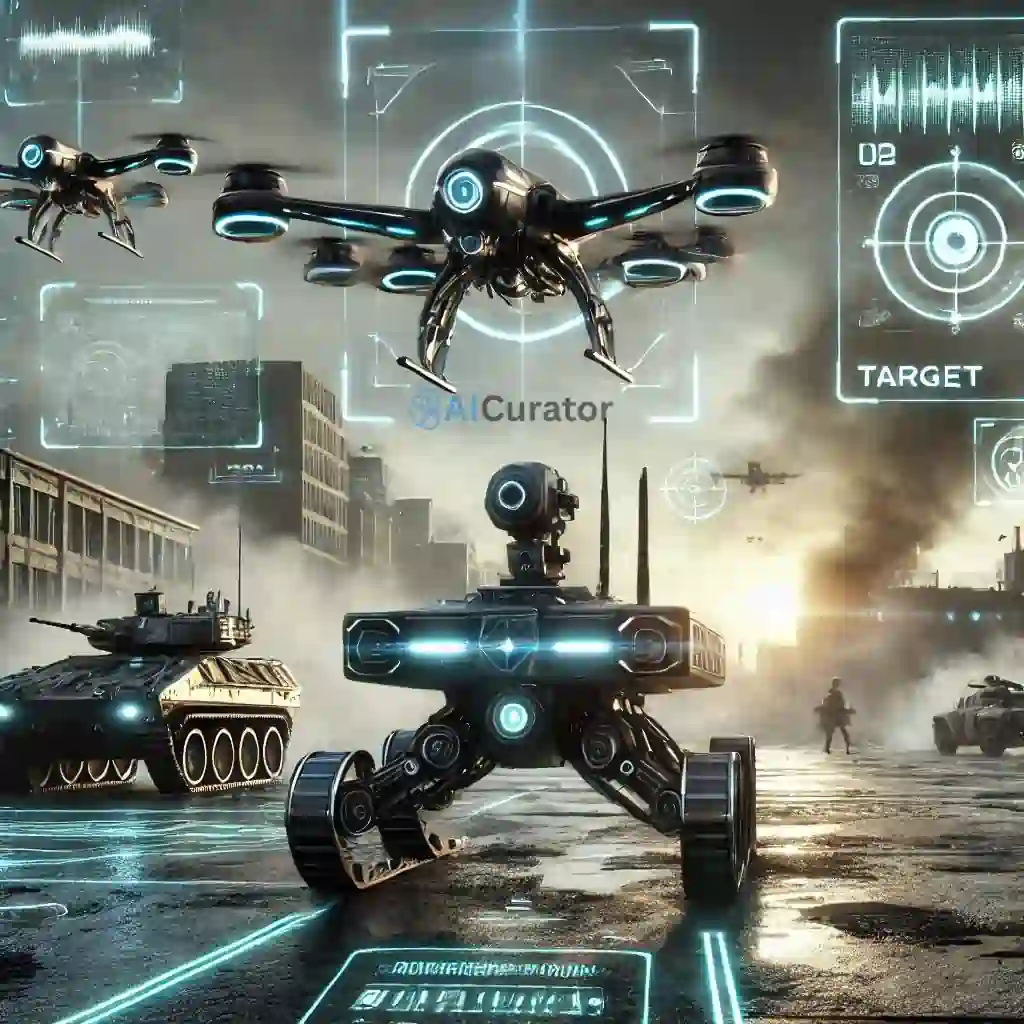What happens when war decisions are no longer made by humans? From AI-generated kill lists to drones that pick their own targets, AI in military isn't the future—it's already rewriting the rules of combat.
In Gaza, Ukraine, and beyond, autonomous weapons and algorithmic warfare are operating at speeds no general can match. Cyber warfare attacks now require no boots on the ground, just code and connection.
As machines take over battlefield logic, the line between control and chaos is blurring—and fast. This isn’t about smarter tech. It’s about who holds the power when software pulls the trigger—and who’s left to answer for it.
How AI Is Changing Military Operations
Traditional warfare once relied primarily on human decision-making supported by mechanical systems. Today's military operations increasingly leverage AI capabilities across multiple domains. Defense networks now employ algorithms for logistics planning, risk assessment, target identification, and tactical decision-making, creating what experts call “algorithmic warfare“.
In recent conflicts, the integration of AI has accelerated dramatically:

- Intelligence gathering and analysis: AI systems process massive data streams from satellites, drones, and other sensors to identify patterns and predict enemy movements
- Target generation: As seen in Gaza, AI tools like Israel's “Lavender” system have reportedly generated over 37,000 potential targets, fundamentally changing the pace and scale of targeting operations
- Command decision support: AI helps commanders process information faster, getting inside what military strategists call the opponent's “OODA Loop” (Observe, Orient, Decide, Act)
Autonomous weapons systems represent one of the most visible applications of military AI. These include aerial drones, unmanned ground robots, and intelligent missile systems designed to detect, select, and engage targets with varying degrees of human supervision.
Proponents argue these systems reduce risk to military personnel while improving accuracy, but critics highlight serious concerns about targeting errors and ethical implications.
The Intelligence Revolution
The true power of military AI lies in its information processing capabilities. Modern surveillance operations generate enormous volumes of data that would overwhelm human analysts.
AI excels at sorting through this information to:
- Detect enemy movements across vast areas
- Identify patterns indicating potential threats
- Predict adversary actions before they occur
This intelligence advantage creates conditions for “predictive warfare” where potential enemy actions can be anticipated and countered before they materialize. However, these capabilities raise serious questions about privacy, state power, and the consequences of algorithmic errors.
Cyber Warfare: The Digital Frontline
As critical infrastructure becomes increasingly digitized, cyber warfare has emerged as a key battleground where AI plays a central role. Offensive AI applications include identifying software vulnerabilities and deploying targeted malware, while defensive systems detect intrusions and patch vulnerabilities in real-time.

These cyber capabilities allow for rapid escalation without physical military deployment, but they also create new vulnerabilities in power systems, communications networks, and security infrastructure.
Ethical and Legal Challenges
The integration of AI in military presents profound ethical questions that existing legal frameworks struggle to address:
Oxford’s chapter on AI and humanitarian law warns break-neck autonomous targeting outpaces legal guardrails, raising unlawful strike risks. A Frontiers in Big Data study on military AI ethics exposes built-in bias and opaque algorithms, showing civilian safeguards demand updated laws for transparency, oversight, and accountability.
Regulatory Landscape and Future Trajectory
International organizations including the United Nations have begun addressing the boundaries of military AI, but effective enforcement policies remain absent. This regulatory gap allows rapid technological development to outpace ethical and legal frameworks.
The future battlefield will likely be characterized by:
- Increased algorithmic decision-making with less transparency
- Advanced human-machine teaming concepts
- Deployment of coordinated drone swarms
- Integration of quantum computing for enhanced decision processes
Nations investing heavily in military AI will gain significant strategic advantages, potentially triggering a new arms race focused on algorithmic capabilities rather than conventional weapons.
Human Control in the Age of Military AI
Algorithm-driven warfare marks a total shift in combat dynamics. While AI in Military brings sharper targeting and keeps soldiers safer, it puts civilians at new risk. As drones pick targets and cyber tools attack remotely, we face urgent questions: Who controls lethal force? Who answers for machine-made mistakes?
Nations must build guardrails that keep battlefield AI under human oversight and stop tech advances from racing ahead of ethical limits. Without proper checks, autonomous weapons and algorithmic warfare could create battlefields where code, not conscience, rules.
















